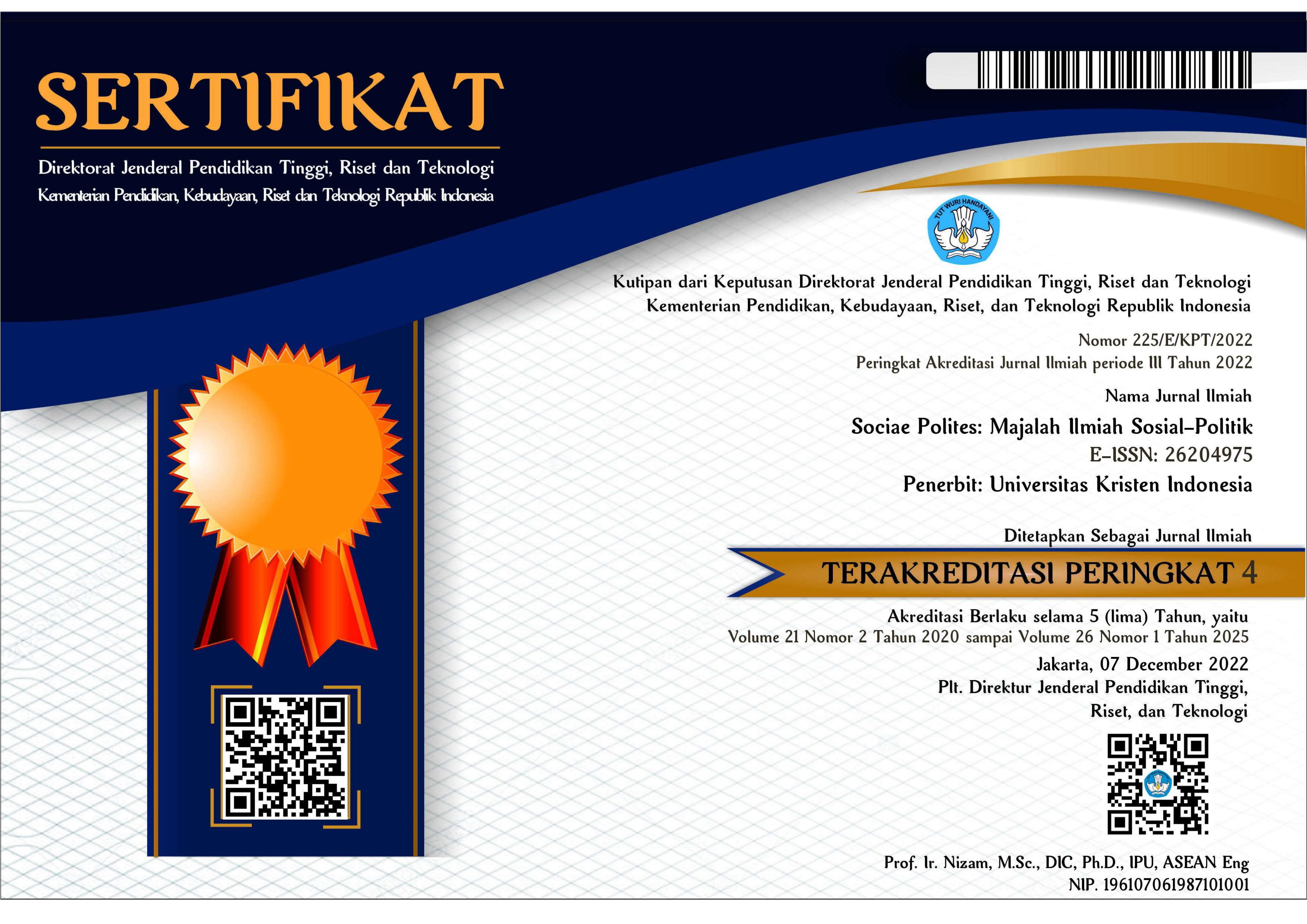THE ROLE OF THE INDIGENOUS ELITE IN THE 2017 REGIONAL HEAD ELECTION OF BURU REGENCY
DOI:
https://doi.org/10.33541/sp.v23i2.4167Abstract
The traditional elite in the 2017 Buru Regency Head Election has a strategic position for the survival of democracy for five years. The influence and power they have is the key in the democratic process of the 2017 Pilkada won by the couple Ramli Umasagi and Amustofa Besan (RAMA). This study seeks to understand the existence of local elites on Buru Island and their role in the 2019 Regent Election. using the elite theoretical framework proposed by Mosca, Pareto and Keller synthesized with the theory of political participation formulated by Mirriam Budiarjo, Samuek Huntingting and Joan Nelson. This study finds that in the Buru Island community, the local elite has been stratified in structure; Mat Gugul, Hinolog and Soa. The figures in this elite not only play a role in social, cultural and economic functions, but also have an increasing significant political role During the reformation period. Second, In the 2017 Pilkada, these elites have carried out intense participation, among others, in conducting political socialization, being the Pilkada committee, mobilizing lower-level so that the community participates in politics and not abstaining, Resolving conflicts if they occur and providing political support to RAMA candidates. whose triumphed in this election. This research strengthens theories about the role of local elites or non-governing elites in the political process. Therefore, theoretically the democratic process should pay attention to the role of local elites who have been proven to have an influence as evidenced in this study
Key words: Indigenious Elite, Pilkada 2017, Buru Regency, Ramli Usagi, Matgugul, Hinolong, Soa


 Sociae Polites: Majalah Ilmiah Sosial Politik
Sociae Polites: Majalah Ilmiah Sosial Politik